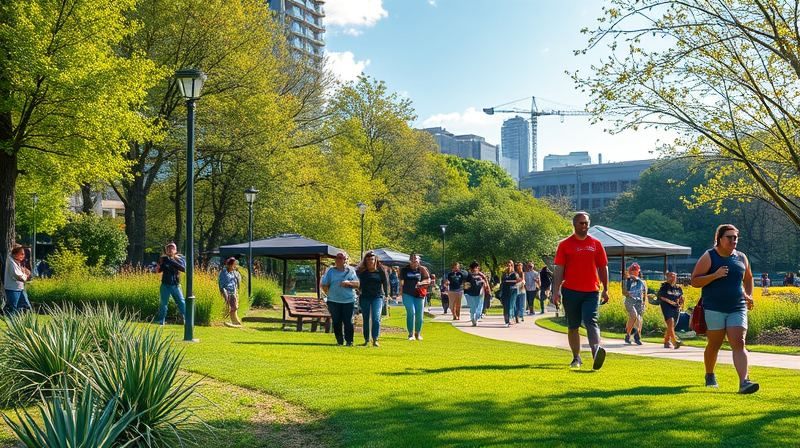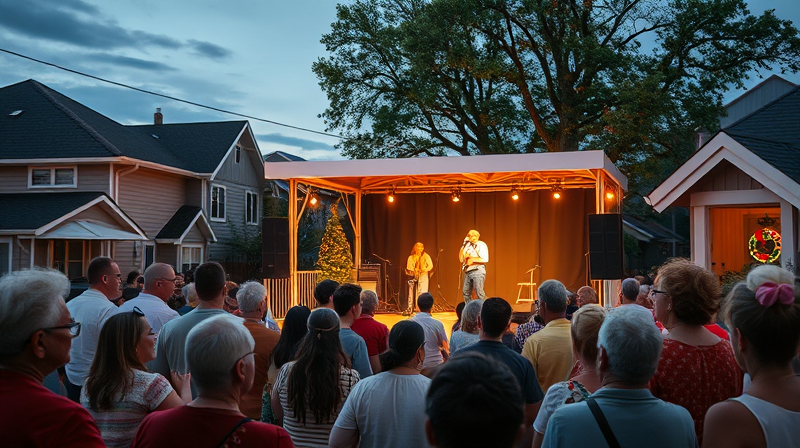Bringing a community together is a powerful way to foster connections, celebrate local talent, and create memories that last a lifetime. Whether you are aiming to entertain, educate, or raise funds for a cause, planning a community performance or event can be both fulfilling and transformative. With clear objectives and a detailed plan, you can ensure that your event resonates with your audience and meets your goals.
A successful event begins with a solid foundation. With the right preparation, even the most ambitious plans can turn into reality. This guide provides a comprehensive approach to organizing an event that leaves a lasting impact on your community.
Defining Your Objectives and Crafting a Vision
The first and most crucial step in your planning process is to define the purpose of your event. Ask yourself what you want to achieve—whether it is to celebrate local culture, raise funds for a community initiative, or simply provide a platform for local talent. Articulating a clear vision helps in tailoring every subsequent decision to meet that core objective.
It is also essential to understand who your event is for. Identify the target audience by considering age groups, interests, and cultural backgrounds. This step will guide you in designing a program that is both engaging and relevant to the community. Making data-driven decisions by utilizing surveys and community feedback can further fine-tune your approach.
A well-defined objective not only provides a roadmap but also helps in garnering support and sponsorship from local businesses and community leaders.
Setting a Realistic Budget and Securing Resources
Once you have a clear objective, the next step is to set a realistic budget. Budgeting is not simply about estimating costs, but about ensuring that every aspect of your event is financially sustainable. Include potential expenses like venue hire, permits, insurance, catering, audio-visual equipment, and promotion. An accurate budget will provide a financial blueprint that you can refer to throughout the planning process.
- Venue Hire: Choose a venue that suits the theme and can accommodate your anticipated crowd.
- Permits and Insurance: Secure the necessary legal documents to ensure safety and compliance.
- Catering and Equipment: Plan for food, beverages, and technical support to keep the event running smoothly.
- Marketing and Staff: Allocate resources for promoting the event and compensating volunteers or professionals.
Tracking expenses and adjusting your budget as needed will help keep your planning process flexible and responsive to unexpected challenges.
Choosing the Right Date, Time, and Venue
The selection of an appropriate date, time, and venue is pivotal to your event's success. Look for a date that avoids conflicts with other local events and holidays, ensuring that your community can fully participate.
When choosing the venue, consider factors such as accessibility, capacity, parking, and mobility. Whether it is a local community hall, a park, or a unique space like a warehouse or barn, the venue should mirror the spirit of your event and be welcoming to all who attend. Accessibility is key—ensure that the venue accommodates individuals with disabilities to foster an inclusive atmosphere.
Crafting a Captivating Theme and Program
A strong theme ties the event together and creates a memorable experience. The theme should reflect the interests of your target audience while aligning with your stated objectives. For instance, a talent night featuring local artists, musicians, and performers can be both entertaining and inspirational.
Design a detailed program that structures the event effectively. Include quality performances, interactive segments, and breaks that allow participants to network and relax. Consider incorporating interactive workshops or panel discussions to maintain high engagement levels throughout the event.
Adding an online element can also broaden your reach, engaging community members who are unable to attend in person.
Effective Marketing and Day-Of Execution
For your event to be well-attended, reaching out through multiple channels is essential. Employ social media campaigns with a unique hashtag, distribute flyers in key community spots, and collaborate with local influencers or community leaders. A mix of traditional outreach and modern digital promotions can significantly boost your event’s visibility.
On the day of the event, ensure that all logistics are in place. Begin with a thorough setup, and test all technical equipment early. Clear communication among volunteers and staff is crucial for a smooth operation. Prominent signage and a welcoming environment help produce a positive first impression that can make all the difference.
Having backup plans to address challenges like technical issues or inclement weather is essential. A well-prepared team that can calmly and efficiently respond to real-time challenges is the backbone of a successful event.
Post-Event Evaluation and Future Improvements
The process doesn’t end when the event wraps up. Post-event evaluation is important for gathering insights and measuring overall success. Distribute surveys and seek feedback to assess what worked and what could be improved. This reflective process will help you fine-tune your planning strategies for future events.
Celebrating your success and learning from any setbacks foster a culture of continuous improvement. By analyzing key performance indicators—such as attendance, engagement levels, and overall satisfaction—you can create even more impactful events in the future.
Planning a community performance or event is a journey that requires passion, collaboration, and attention to detail. With a comprehensive strategy that encompasses creative vision, meticulous planning, and strategic execution, your community event can become a lasting testament to local unity and spirit.








